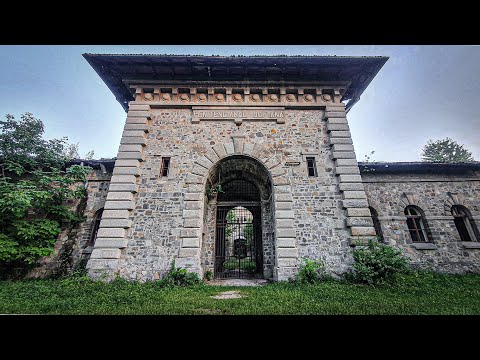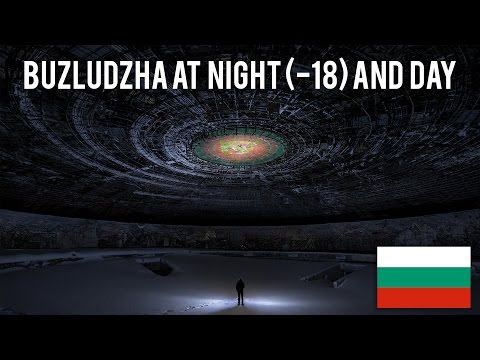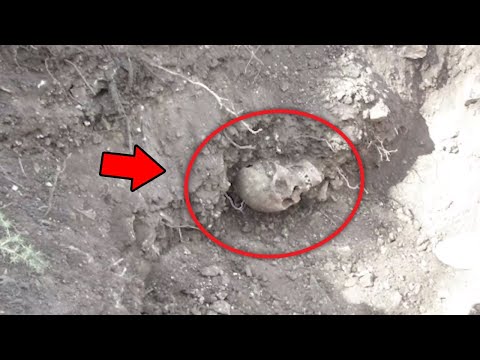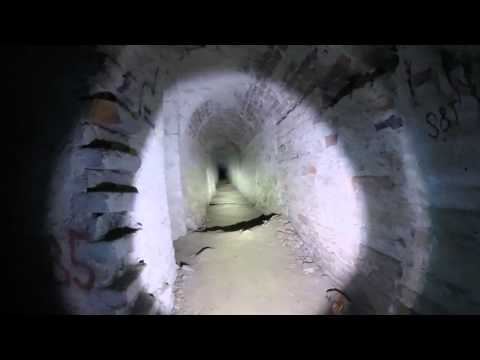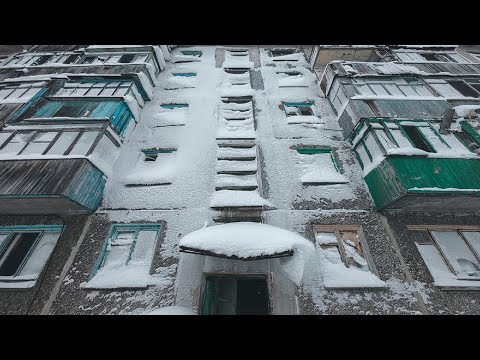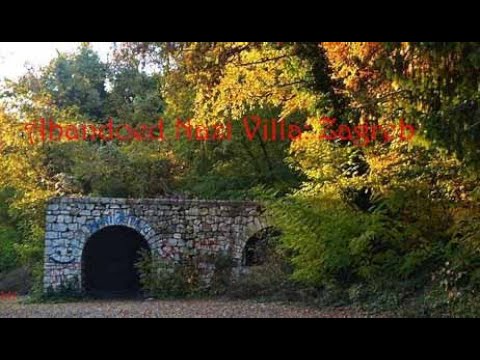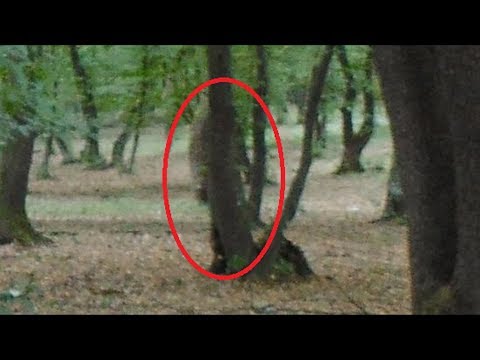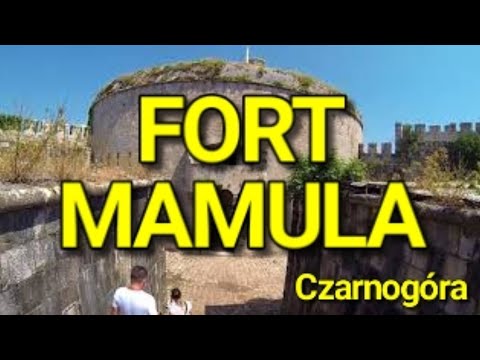So from the crumbling ruins of a genocidal dictator’s lair to a cave regarded as the entrance to hell itself, here are ten of EasternEurope’s creepiest and most mysterious locations, both man-made and natural.
10 Doftana Penitentiary, Romania
Nicknamed the “Romanian Bastille” for its use as a brutal political prison, the Doftana Penitentiary started life as a housing complex for workers at a nearby mine. In 1921, however, the Romanian king converted it into a prison for communists. With eight wings, 308 cells, and a defensive wall, Doftana was a truly intimidating place. Its most famous inmate was the future General Secretary of Romania, Nicolae Ceausescu. These political prisoners, many of whom were tortured into renouncing their ideology, famously put together a secret magazine using old cigarette papers. Earthquakes frequently hit Doftana, such as in 1940 when over 300 prisoners were injured. It was closed in 1947 and turned into a museum by the new communist government. However, in 1989, Doftana was abandoned for good, and it is now a maze of detention cells, iron bars, and crumbling hallways. The composer Alfred Mendelsohn wrote a symphonic poem inspired by Doftana, which captures the dark history of this brutal political prison ravaged by earthquakes.[1]
9 Buzludzha Monument, Bulgaria
While Russia is replete with old Soviet ruins, the most extraordinary and terrifying Soviet relic of all is in Bulgaria. Known as the Buzludzha Monument and built to celebrate Bulgaria’s communist history, it was completed in 1984. The shape of the huge concrete chamber is reminiscent of a UFO. But its inside was decorated with vast, complex mosaics of Karl Marx and Vladimir Lenin comprising over two million individual pieces. Watch this video on YouTube In 1989, like most Soviet superstructures, Buzludzha was completely abandoned. Its once exquisite murals and mosaics have almost completely fallen to pieces, and the huge glass ceiling has shattered. In winter, the central chamber is filled with snow, and looters have stripped away any valuable materials like copper. While the monument’s tower does remain standing, its red star was destroyed by visitors who thought the star was made of real rubies. There is perhaps no better testament to the legacy of the Soviet Union than this otherworldly, mysterious ruin in the middle of the Bulgarian countryside.[2]
8 Daksa Island, Croatia
Daksa is an uninhabited island just off the coast of Croatia’s most beautiful city, Dubrovnik. It has a ruined Franciscan monastery built in 1231, along with the remains of an old fortress, a villa, and a small lighthouse. This lovely island is up for sale at the price of just over two million dollars. What might surprise you is that Daksa has been on the market for over two decades and is yet to find a buyer. The reason for this is that Daksa Island has a disturbing and bloodstained history that has warded off any potential buyers. In 1944, Dubrovnik was liberated from the Germans by communist soldiers, who promptly rounded up suspected Nazi sympathizers and rowed them over to Daksa Island. These prisoners, who included several priests and the new mayor, were summarily executed by a firing squad without trial. It was only sixty years later that two mass graves were discovered on Daksa, and the victims were finally laid to rest.[3]
7 Petrovaradin Catacombs, Serbia
Petrovaradin is a beautiful Serbian town on the banks of the Danube with a rich history going back to the Romans. The town’s crowning jewel is the Petrovaradin Fortress, built by the Austrians in the 17th century to guard against Ottoman invaders. It is known as the “Gibraltar of the Danube” because of its strongly fortified position and strategic importance. Beneath the fortress, however, lies an old mystery: the catacombs of Petrovaradin. This network of tunnels has four different stories and runs more than 16 kilometers (10 miles) in length. Its walls are inscribed with Masonic symbols, Maltese crosses, and a mysterious inscription saying “IPAM MIAM,” which no one has been able to decode. While it was definitely used for military purposes, the catacombs have also been used for other, darker purposes throughout their long history. Each level is painted in a different color: the first is red, the second is green, the third is blue, and the deepest is black. One popular rumor says part of the Austro-Hungarian Imperial fortune is still hidden somewhere within the catacombs.[4]
6 Hill of Crosses, Lithuania
In the 14th century, the inhabitants of a Lithuanian town called Siauliai started placing wooden and metal crosses on a nearby hill, though nobody knows exactly why. There are several legends about this hill. Some state that it is the site of a Medieval church that was buried by rocks in a huge storm with the monks still inside. Others claim the mound was formed by the bodies of thousands of pagans who were slaughtered by the Livonian Order and that these pagans and monks both haunt the hill. The Soviet Union destroyed the Hill of Crosses four times, but Lithuanians from across the country kept bringing crosses to the hill. After the collapse of the USSR, it was allowed to expand even more. Now, it is a labyrinth of life-size crucifixes, 4.5-meter (15-foot) statues of Jesus, and hundreds of thousands of smaller crosses. For some, it is a site of pilgrimage, including Pope John Paul II, but for others, it is a haunting place that looks more like a graveyard of crucifixes.[5]
5 Vorkuta, Russia
The world is full of abandoned towns. From Pripyat in Ukraine to Craco in Italy, we are familiar with the sight of empty streets and broken windows. But Vorkuta, the easternmost town in Europe, is a wholly different kind of abandoned town. Situated well north of the Arctic Circle, Vorkuta is a collection of towns built around the now dwindling Russian coal mining industry. It was used as a gulag in the 1950s, and less than half of the original mines are still operational. What makes Vorkuta so captivating compared to other forgotten cities is its climate. With temperatures dropping to -50°C (-58°F) and whole weeks without sunlight in winter, Vorkuta looks less like it has been abandoned and more like it has been destroyed by a natural disaster. Indeed, the sight of couches, tables, and chandeliers covered in thick frost is somehow more shocking than if they had simply been left alone to decay. Vorkuta has quite literally been frozen in time, almost perfectly preserving a Soviet coal mining community for us to marvel at.[6]
4 Devil’s Throat Cave, Bulgaria
The Devil’s Throat Cave in Bulgaria is alleged to be the place where Orpheus entered the underworld to rescue his dead wife, Eurydice. Situated in Bulgaria’s Rhodope Mountains, the cave gets its name from the fact that its entrance resembles a demonic face. Furthermore, water from the Trigrad River falls nearly 44 meters (150 feet) directly downward, this huge drop being the eponymous “throat” of the devil. This underground waterfall lands in the Hall of Thunder, so called because of the deafening noise it makes. A funnel 90 meters (300 feet) deep then channels the water underground, resurfacing in a separate chamber of the cave network. This is where things become even more terrifying. Nothing carried into the Devil’s Throat Cave by the Trigrad River ever appears on the other side. People have attempted to use wood, dyes, and floats, but whatever goes underground stays there. You can see why this cave was mythologized in Bulgarian folklore as an entrance to hell itself.[7]
3 Vila Rebar, Croatia
Vila Rebar seems more like the lair of a comic book villain than a real place. Originally built in the 1930s, it was taken over by the Croatian dictator Ante Pavelic during World War Two. Pavelic was an admirer of Hitler, and under his leadership, over 600,000 Serbians were killed in one of history’s least well-known genocides. The fascist dictator was also deeply paranoid about his safety and constructed a vast network of underground tunnels beneath Vila Rebar as a result. The full extent of this subterranean lair is yet to be fully documented, though it is believed they once led to nearby military bases and also acted as escape routes. After Pavelic was deposed, Vila Rebar was converted into a mountain resort, but it was partially destroyed by fire in 1979 and left to rot. Now only the stone foundations of the original villa remain. However, Pavelic’s tunnel network is still intact. Its walls have been graffitied with disturbing images, and locals tell gruesome ghost stories about this vast and mysterious labyrinth.[8]
2 Hoia Baciu Forest, Romania
While Japan’s suicide forest has a reputation for being the creepiest forest in the world, that is because of what it is used for more than because of the forest itself. However, the Hoia Baciu Forest in Romania is a much more terrifying place. Located deep in the Carpathian Mountains of Transylvania—the home of Dracula—Hoia Baciu dates back more than 55,000 years. Watch this video on YouTube There are numerous local legends about Hoia Baciu, such as a five-year-old girl who got lost and returned five years later with no recollection of where she’d been. Farmers are also known to stay well clear of the Hoia Baciu. But even more than these haunting tales, it is the appearance of the forest that makes it so creepy. Its ancient trees are gnarled and crooked—none of them grow straight—and they are often draped in thick fog. Scariest of all is the large clearing at the center of the forest where nothing grows—without any scientific explanation.[9]
1 Mamula Fortress, Montenegro
On an island formerly known as Lastavica, just off the Montenegrin coast, there lies an old castle with dark secrets. Known as Mamula Fortress, it was built by the Austro-Hungarian admiral Lazar Mamula in the 1850s. Strangely, not a single cannon shot was ever fired from the fortress walls, nor was it ever attacked. The Austro-Hungarians used it as a prison during World War One, and during World War Two, it was used by Mussolini’s fascists as a concentration camp. Standing 16 meters (50 feet) and nearly 200 meters (700 feet) in diameter, this intimidating fortress was home to around 2,000 prisoners. These inmates, who included women and children, were starved, beaten, and tortured. Over 130 inmates died in Mamula, and their descendants still visit the island as an act of tribute. In 2019, the Montenegrin government revealed plans to build a luxury tourist resort on the island. This was understandably met with disgust, and it is certainly hard to imagine people partying in the same rooms where political prisoners were starved to death less than eighty years ago.[10]
